
Mountain biking: 15 lessons on effective risk management
Content
- 1. Never rely on mountain rescuers.
- 2. Bring suitable equipment.
- 3. Prepare your route.
- 4. Climb to where you are descending.
- 5. Take an interrogative position.
- 6. Always assume that we are going to sleep one night upstairs.
- 7. Be prepared to give up equipment, especially cycling.
- 8. Always have a supply of drinking water.
- 9. Follow your instincts.
- 10. Consider the weather.
- 11. Don't go with anyone ... not much
- 12. Ability to give up
- 13. Always drive 20% below power.
- 14. Listen to your fear
- 15. Don't film yourself!
- video
QWhen you ride your mountain bike up the high mountains, you are no longer a mountain biker. We are becoming highlanders. I often repeat: I do not ride a mountain bike, I ride a mountain bike. Leaving this sentence in your memory will radically change your point of view. Cycling skills are of little use other than satisfying the ego as you drive through a line or tech section. On the other hand, mining skills come in handy for everything else. That is to say, everything that is not superfluous.
Too often, we read articles about mountain safety solely in terms of equipment or technical considerations: this reinforced titanium jacket that permeates sweat will protect you from mountain goat bites ... calls for help and gives you coffee while you wait ... Considering that after the south-south-east wind and the ISO increase at 300 m it was + 8 ° C, the top layer of snow will be unstable. from the moment of sliding ...
In mathematics, we learn to think to extremes in order to arrive at a general result. Let's apply this to mining risk: if you don’t go to the mountains you don’t die in the mountains... We draw a simple corollary: the problem is in you... The mountain itself is not dangerous. But what are you going to do there, yes.
What I am about to present is not technical advice, it is just common sense principles of behavior. Many climbers use them intuitively. But the majority do not know or hardly realize it. So I'll just try to put it into words.
Let's start with the parent question that spawns all the others:
What happens if I hurt myself?

Risk management is nothing more than asking this question. You are going to tell me that we can also think about how not to get hurt… But it all comes down to asking how not to get into an accident, which is stupid, you will agree, since the characteristics of an accident include the fact that it is unintentional and unintentional.
What if I cut myself in the high mountains?
This brings me to the first principle:
1. Never rely on mountain rescuers.

If you are really going to the wild mountains, the phone usually does not go through. Just. When I see mountain bikers above 2000m, dressed as XC, with a small bag on the frame, it means that they are betting on a helicopter. What mistake!
But the easiest way is to take an example: you are three hours away from the parking lot, in the spring, at a height of 3 m, with a friend. You are not afraid: there are two of you, the weather is good, when you left, it was 2500 degrees Celsius in the car. What happens if you hurt yourself? Let's say you broke your ankle. In itself, this is a benign injury ... But you are immobilized, and the phone does not go through. Therefore, your friend must come down for help. Let's say it's 10:17 now. By the time he goes to bed, he calls, manages to provide the necessary information, etc. Night has come. Forget about the chopper! You will have to spend the night in the mountains. Never mind, it was hot. Except that we lose an average of 1 ° C per 100 m. If the car had 10 °, it would be 1000 m higher ... zero! Night falls, drops to -6 or -7 ° C. Add some wind 15 km / h above it. If you look at the official "wind chill" charts, it corresponds to about -12 ° C. And let's be clear: overnight at -12 ° C without proper equipment, you will die!
Of course, it is advisable to temper a little (no pun intended). There is a night rescue, the helicopter can take off in good weather. But what if the weather turns bad? The ambulance crew can climb on foot. What if you were all alone at the base? Or even what about an injury that isn't necessarily serious but requires prompt treatment, such as hemorrhage or nerve damage?
In short, betting everything on a fast and efficient response to emergencies is at best a foolish approach, at worst a suicidal one. Or vice versa.
What I just did is called "risk analysis" in engineering terms.
You must constantly ask yourself this question: what if i cut myself?
Do not scare yourself, but detached, objectively, in order to make the right decisions. You should ask yourself before leaving, during the preparation of the route and equipment, during the walk, to integrate the new risks that you perceive, and finally ask yourself to draw conclusions again.
2. Bring suitable equipment.

Be careful, "adequate equipment" is not the whole arsenal of survival fans! In survival manuals, for example, the knife is the basis of everything. You feel that if you break the knife, you will die in 10 minutes. Well, in the mountains, a knife is really useless! This tool, other than slicing sausage, won't increase your chances of getting away with it. Because it's not about survival. It's a matter of descent or, at worst, waiting in the fight against the cold. In any case, you will not have time to hunt ibex in Opinel or build a hut.
Thus, the minimum suitable material is:
- Basic first aid kit, including pain relievers, bleeding medications, and sunscreen.
- Cold weather clothing and a safety blanket (I always take a down jacket and a mountain jacket, even in the middle of summer at 30 ° C)
- Food and water (and Micropur® for water, but we'll come back to that)
- A phone that saves your batteries. It would be a shame to deprive yourself of this if it captures.
- Map and compass (the compass is really very rarely useful, except in dense forests or in foggy weather. However, when needed, it is a valuable tool).
Indeed, all of this will not fit into a frame bag ... Of course, a large bag especially limits mountain biking. We are less good, even much less good for downhill. But you have no choice!
3. Prepare your route.

... And I would add: leave the information to a third party.
Facebook Wall or Strava is not a trusted third party!
For especially dangerous walks, we can even leave strict instructions, for example: "If I did not give any news at such and such a time, send help to such and such a place." But no abuse when calling for help! Since a helicopter that takes off looking for you when you are not at immediate risk, it is a helicopter that will not save anyone else from potentially deadly danger. Of course, helicopters can be rerouted depending on the severity of the situation, but ultimately they still exist in limited numbers. And this also applies when we call 15, the fire brigade, or when we go to the emergency room.
Obviously, the purpose of route preparation is not to get stuck in dangerous terrain, but to make the walk adapted to your level (adapted to length and technique). To do this, you need to be able to use the map and, perhaps (I mean eventually) new digital tools and all related applications. However, you should not put everything on GPS. Because by following the GPS route, we don't ask any more questions. And asking questions is the foundation of risk management. Not to mention the fact that the card is not discharged.
4. Climb to where you are descending.

This principle should be applied especially when freeriding. This allows you to check the terrain, reveal hidden dangers and, above all, avoid embarrassment, that is, getting stuck over a cliff, which often leads to errors.
Ideally, even in advance to conduct exploration on foot, in the "easy hike" mode. I always walk on open and difficult routes. For example, for Peak d'Are it was a rise of 1700 m of vertical drop and more than 7 hours of walking! Yes, a really big hike ...
I also do reconnaissance sometimes ... in a drone!
It even allowed me to "get out of the way" once when I got stuck over a long limestone cliff (I went down without going up this slope and I only had a bad Spanish map on the underside. Permission). The drone then allowed me to find a corridor that allowed me to go through the bar, a kilometer to my right.
5. Take an interrogative position.
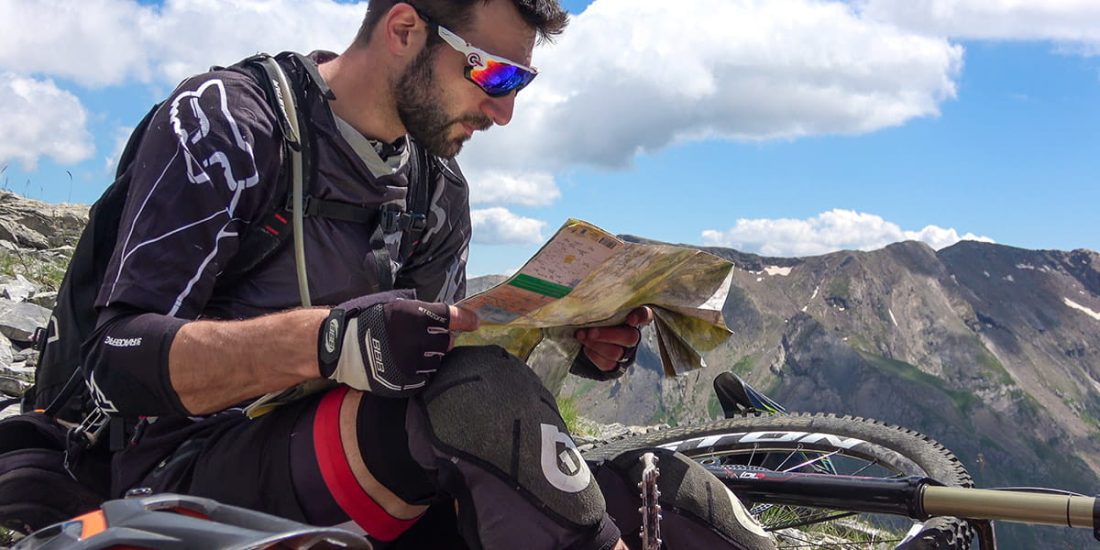
Once in the field, conditions are rarely what one might imagine. You must be able to coldly integrate everything.
When we talk about change, we must not forget that the first reaction of the human mind to any sudden change is denial. In psychology, this is called the “mourning curve.” It is a series of mental states (denial, anger or fear, sadness, acceptance) that is applied when a major event occurs, such as bereavement, but also with any everyday annoyance. Unless in this case it happens faster.
Let's take a simple example: you will lose your wallet. First you say to yourself, "No, he's not lost." You go for it and then you get angry. Then the administrative procedures will demotivate you, you will be shot ... And, finally, you will accept the situation and calmly do what is necessary. Some people will go through this curve very quickly, in a split second. Others are much longer. Finally, some in the case of very serious events may get stuck at some stage for the rest of their lives! But in general for a wallet, this is unlikely.
It is important to know that the first reaction is necessary. negation.
This is important in the event of an accident, because even if you are seriously injured, you will get up and say to yourself, "It's okay!" And this can lead to an accident, which will worsen the situation. This mental schema is valid for everything: if the weather changes, you will start by denying that fact and tell yourself that it’s not that bad. If your teammate blows the wind at you (see the Wind Temperature Chart) when you flirt with her, you will think she is shy ...
6. Always assume that we are going to sleep one night upstairs.
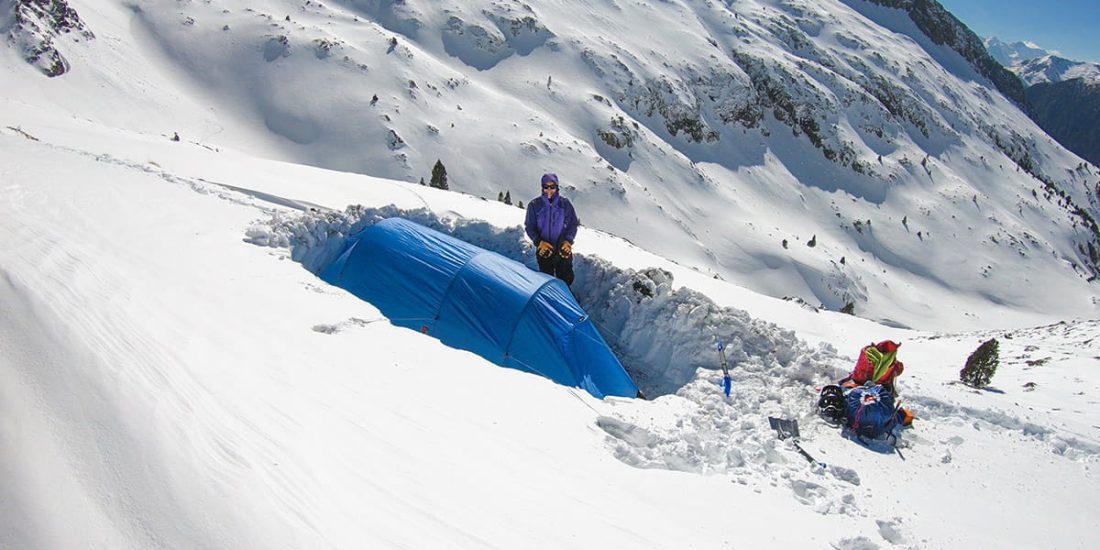
An unexpected night in the mountains can happen very quickly. We've already talked about injuries, but we can also just get lost or even suffer from weather events such as fog ... And a night in the mountains can quickly end in death. So I still think I should be able to spend the night upstairs.
This does not mean that I carry a bivouac with me every time. It's just that the reference temperature I take to pick up my clothes is not daytime temperatures, but nighttime temperatures, often much cooler, especially in the middle of the season. In the same way, it is necessary to integrate the supply in energy bars and water.
However, it's best to do a volunteer bivouac!
7. Be prepared to give up equipment, especially cycling.

When we find ourselves in a difficult situation, we often have bad reflexes.
As I said, the first reaction of the human mind is denial. Therefore, we tend to underestimate the seriousness of the situation. What can make us stand out is the desire to keep your equipment at all costs. For example, if you get injured, you will also try to get off your bike or backpack, putting yourself in even more danger. And all you need is your clothes, your phone, first aid kit, water and food. Everything else can be discarded.
Therefore, before heading to the mountains, you must be psychologically prepared to sacrifice your new € 6000 bike, your € 2000 drone, or perhaps your self-esteem!
This psychological effort should be done before, not after, you hit the wall.
8. Always have a supply of drinking water.
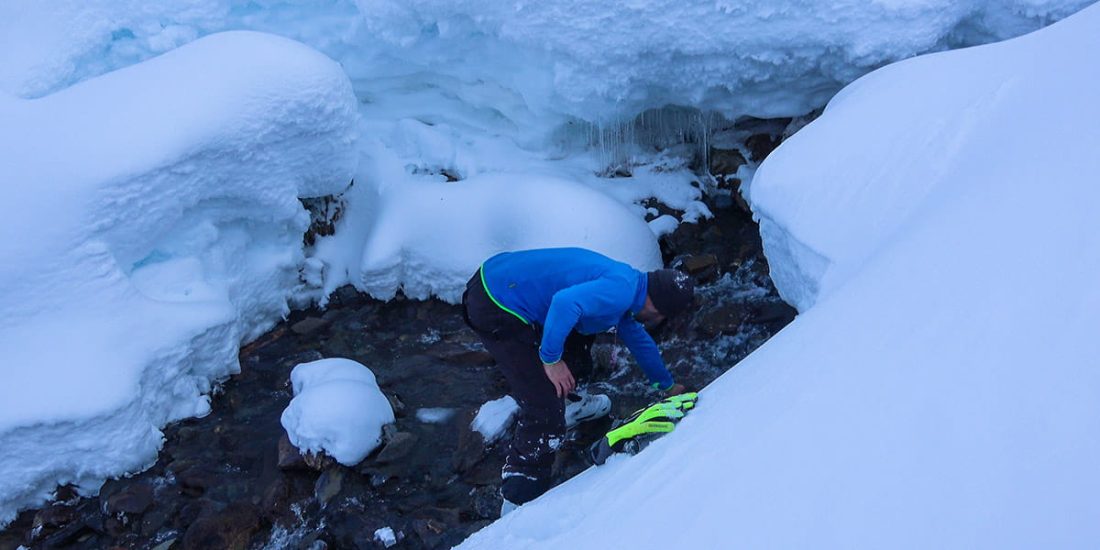
We often hear: “water is life”. But even more so in the mountains, because the height accelerates dehydration. If you run out of water at altitude and are at full strength, you could die in just a few hours.
Moreover, the mountain is deceiving: we usually get the impression that water is everywhere, but not only sometimes there is no water at all (this is the case of limestone plateaus, such as Vercors), but, in addition, when you see it, it is sometimes inaccessible, separated from you cliff or flowing in a canyon. And even water that seems completely available may not be available. For example, snow: it is almost impossible to get water by swallowing a handful of snow. It takes a stove and gas to produce enough without causing other problems. So we need reservations. And you need to do this in advance, and not after your pumpkin is empty.
Finally, when you get into a beautiful little stream and fill the pumpkin, be careful! You run the risk of getting sick, like dogs, from the presence of cattle. And even if you are above the height of the herds, the presence of wild animals is sufficient. Or it could be a dead bird upstairs that you can't see ... In short, in case of poisoning, you twist your guts in less than 3-4 hours. And it can be very cruel. I still remember the chapter of our guide in Morocco: “did you drink in this pumpkin? ... "
This is why, if you are not sure if this is the real source that comes from the breed (that is, almost all the time), you need to disinfect the water with chlorine tablets, usually Micropur®. Of course, it tastes bad, it feels like drinking from a cup in the pool, but since I systematically disinfect the water, I never got sick.
When you are thirsty, even the pool water is delicious.
9. Follow your instincts.

Instinct comes from intuition. And intuition is not a magic trick that came out of nowhere, like the voices of Joan of Arc.
On the contrary, this is something very real: it is adding subtle signals and your experience.
Your body perceives an infinite number of things that you do not consciously analyze: changes in temperature, humidity, brightness, color, vibration, air movement ... Your brain crosses these stimuli, establishes correlations and presents you with its conclusions without you understanding where it comes from: suddenly you have a premonition of danger or a desire to do something that at the moment seems illogical to you. We must take this into account. You must learn to listen to this. And at least systematically ask the question "why?" Why am I afraid now? Why do I want to change my descent route? Why do I want to change my teammate?
10. Consider the weather.
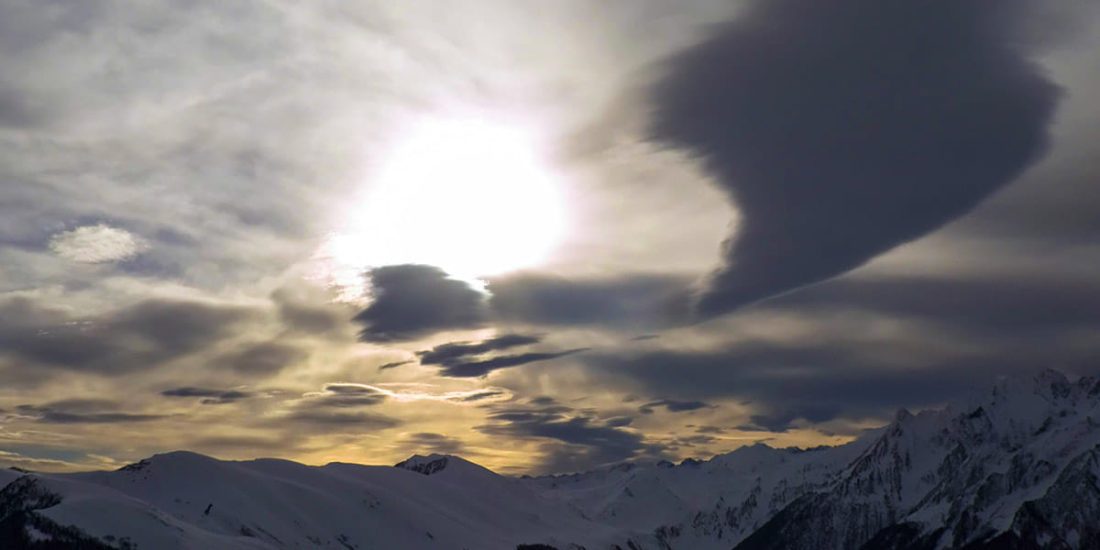
In the mountains, it is very important to analyze the weather. This is a vector of many dangers. First, the obvious direct dangers: thunderstorms, fog, cold, wind ... In this respect, we must be aware that cold and wind are completely linked. There are abacus Windchill which gives the perceived temperature as a function of these two factors. And the perceived temperature is not a product of the mind! This is not a "psychological" temperature. Your calories do grow faster in the wind.
But there are also indirect dangers.
Because the weather isn't just about the sky. For example, the weather has a huge impact on the risk of snow and avalanches. Therefore, the sun can also become a danger. But I will not dwell on nivology, because there is material to make a whole article out of it.
Rain also poses an indirect hazard that can be serious: it makes the rock slippery and can make an unprotected passage impossible that you nevertheless crossed without difficulty on the climb. It also makes steep grassy slopes very dangerous.
Obviously, you should check the weather forecast before setting off, but also be vigilant for changes as you walk.
I personally use Météoblue, a very reliable free site that also provides very valuable data: the height of the clouds. This allows you to plan a walk above the sea of clouds with a little thought for those staying at the bottom of the valley just looking at the sky in the morning.
11. Don't go with anyone ... not much

In the mountains, your main safety resource is a teammate.
It is with him that you discuss the decisions that need to be made, he is the one who will take care of you in case of injury, he is the one who can go and ask for help if the phone does not go through ... So you must choose this teammate: he must have the same level and the same knowledge as you, and above all, it must be reliable! If you are walking with someone weaker, you should be aware that you are becoming a guide and therefore you are doubling your responsibility.
Even worse, if you go with the wrong person, he could put you in direct danger. You must be especially careful with people who overestimate themselves by underestimating the mountain. This is the best combination for getting into a disastrous situation.
As for the number of people in the group... I'm pretty radical! I usually say that in the mountains the correct number is two. Because the two of us do things together. As soon as we get to three or more, the first and last appear, the leader appears, and a competitive relationship is established. Even if you are the best friends in the world, we can't do anything about it, that's the way it is, it's human. There are extreme cases, like when you're a group of singles with a girl in the middle: hello decision logic in the mountains!
You can also go on your own. It's a special experience, and I must admit quite a powerful one, to be alone in the mountains. But in this case it is necessary to leave with full knowledge of the facts. As you already understood, your chances of survival in the event of an accident, even a minor one, are drastically reduced. A small injury can kill you, it's very simple.
12. Ability to give up
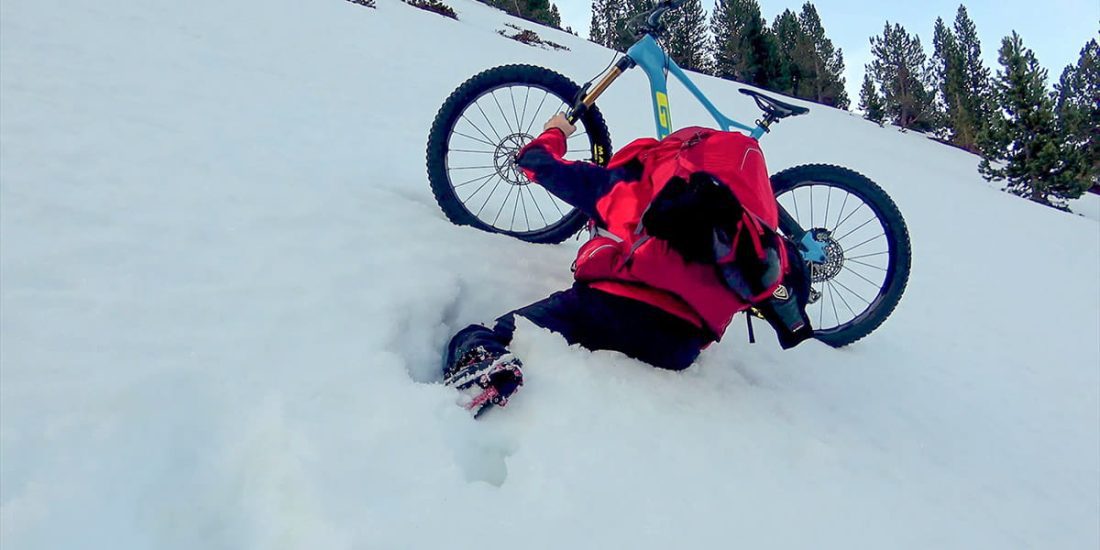
When we make big climbs, we put a lot on the balance: we prepared, we waited for the weather window, we made long car trips, even got on a plane and changed the continent, we bought some equipment, we set the motivation for the test, we did a lot survived to get there ... It is difficult to give up, especially when close to the goal. Most accidents in the mountains occur on the descent, because the team could not stop and continued moving at any cost.
It takes a lot of mental strength to surrender. Paradoxically, it has to be more than the mental strength needed to be successful. But as they say: It's better to regret a race we didn't participate than a race we did..
13. Always drive 20% below power.

Many riders explain that in order to progress, you need to put yourself in a quandary or even fall.
How many times have I heardif you do not fall, it is because you are not progressing!«
There is nothing more stupid.
Already very pragmatic, if you fall, you will scare yourself and stop progressing. But first of all, we must ask ourselves: what is important? Have fun ? or can we say that we pass from T5 or that we send a fall from 4 m? Because when you are going to seriously injure yourself and end up screwing a plate to your vertebrae, the question loses its meaning. Yes, you will advance quickly. But you won't enjoy it for long.
So prudence does not hinder progress. My rule of thumb is to always ride at least 20% below what I can do, be it in terms of technical difficulty or speed. If I'm not sure if I'm crossing a section, no absolutely of course not. Subsequently, this confidence does not necessarily arise immediately. Sometimes I go through the site several times, put my bike on it, take time to concentrate ... And when I'm sure I go for it! But I never go there, saying to myself: "Let's see what happens!"
There is no doubt that if we do not get hurt over the years, we will continually progress and gain confidence to build upon. The virtuous circle. On the other hand, I do not know of a favorable circle that includes large falls. And if spot or resort riders think they might get hurt, this is not the case for mountain riders. There is no room for error in the mountains.
14. Listen to your fear

This principle is very simple, but we never talk about it. There is nothing shameful to be afraid! Fear, it is a biological function that helps to avoid danger to oneself... It's an ally. In general, when the brain sends this message, there is a good reason for it. Certainly not for those who are terrified of the Fiat Multiplat. But in general, there is a use for this.
Not to mention, when we are afraid, we are less effective, our actions are less straightforward, and this is where we make mistakes. This is all the more true of cycling: fear makes you fall, and then you tell yourself that you were right that you were afraid. What is called a self-fulfilling prophecy. But this is true for all sports: in climbing, when you are afraid, you cling to a rock and shoot with your hands ... When skiing, your legs are sluggish and you make a mistake around the edge ...
For my part, if I'm afraid I drop my self-esteem and walk.
This is absolutely confident, which I talked about earlier, which we weigh with our emotions. Because we may know that we are able to pass the section, but at the same time be afraid. And in this case, you should not try.
15. Don't film yourself!

I know this moment may seem paradoxical on the part of someone who is filming a video about mountain biking in the highlands ... I do not mean that you should nothing to try to make a film, that would be hypocrisy on my part.
But to be more precise, I would say that nothing needs to be done. for a camera (or for a girl, which is the same).
Gopro clearly encourages risk taking. If you find yourself alone on a steep slope, you will automatically take the easiest path. On the other hand, if you have a rotating camera, you will directly choose the line that will limit your options. It's the same with speed. In short, the Gopro, the camera, or the camera is a real danger. Like a girl.
If you want to shoot, you must know about it. You should ask yourself the following question: would i do it without a camera? If the answer is unequivocally negative, then you know what to do.

This is related to the last message I want to convey: first of all, you must do something for yourself! You must drive yourself. Go to the mountains yourself. Never finish stages, go to your level and let yourself get carried away by your desires, letting yourself be held back to your limits.
I just want to wish you successful mountain treks!
video
